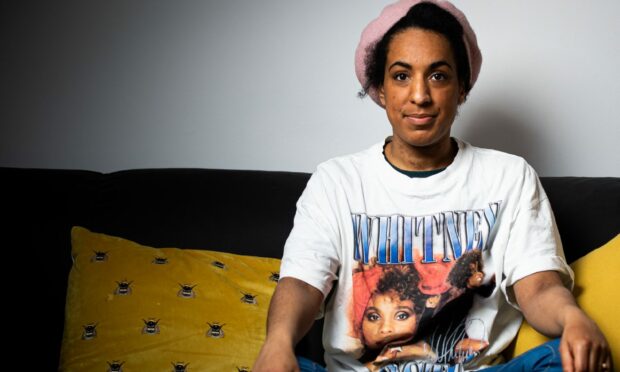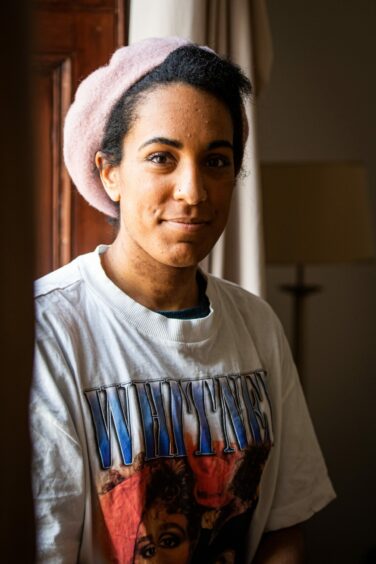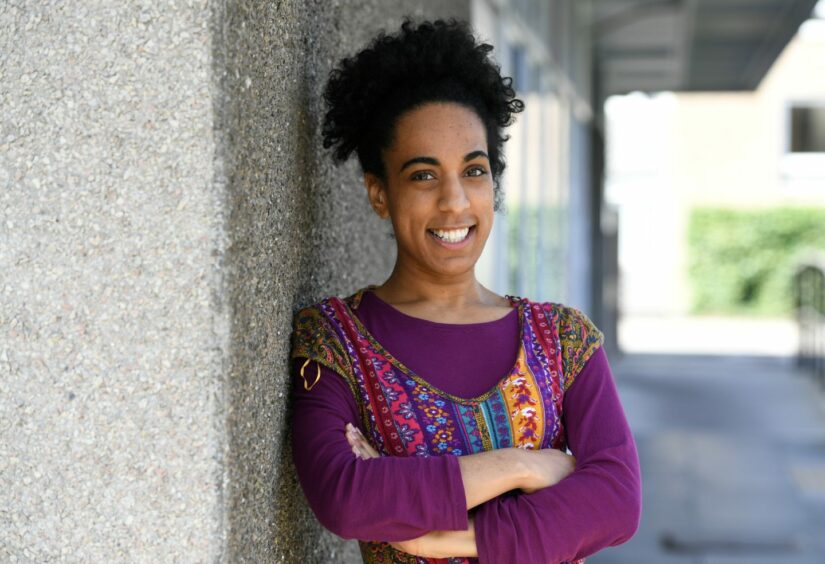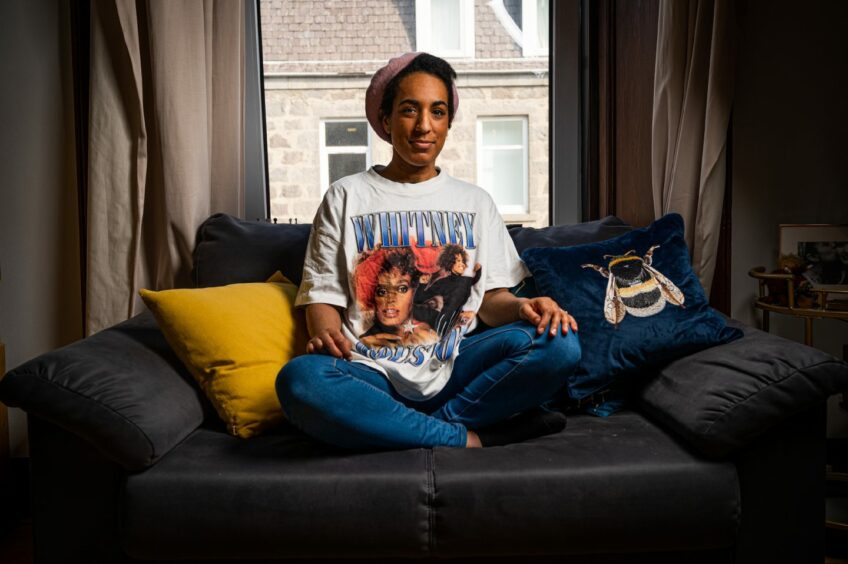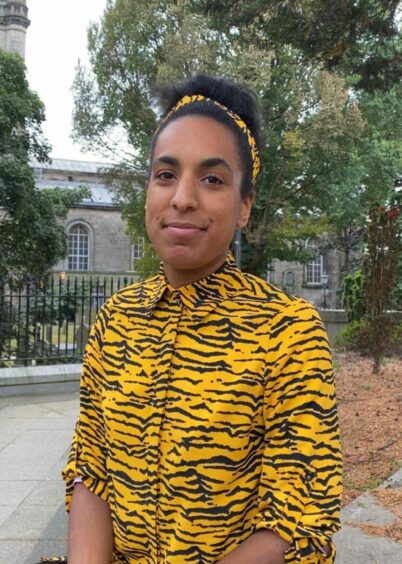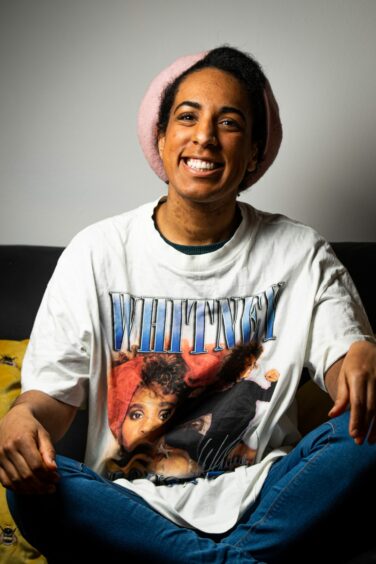Mae Diansangu is a spoken word artist and poet from Aberdeen.
She has been featured in a number of local projects over recent years including the SPECTRA festival, which saw Mae’s “These Streets Are Sleek Wi Ghosts” installation placed above Aberdeen Art Gallery.
In November last year, she also appeared on BBC Scotland’s The Big Scottish Book Club to recite a specially curated Doric poem.
Themes of race, gender and sexuality have permeated Mae’s most recent written work and last weekend, they enjoyed returning to the spoken word stage at Spin in Aberdeen as part of feminist arts platform Hysteria, which she co-founded in 2018.
Yet, Mae explains that their creative journey hasn’t followed a completely traditional route.
Creative interest
“Ever since I was wee, I was a huge reader,” says Mae.
“I was a bit of a daydreamer, so I’d quite often escape into my own thoughts and stories that I’d make up.
“But as I got older, I felt like a lot of writers talked about how they’ve written all their life before eventually finding a platform to share it.
“I didn’t really have that kind of journey. It wasn’t really something that I did a lot of until I got older.”
Mae eventually found their creative platform when they “stumbled upon” a spoken-word night in Aberdeen in 2017.
“A friend of mine had a performance slot at a charity event but he decided not to do it at the last minute,” Mae explains.
“For some reason, I just thought ‘maybe I’ll do that’. So, I wrote something on the day, performed it, and it turned out to be really cool.”
Hysteria
After finding their feet within the city’s spoken word community, Mae and their partner, Hanna Louise, co-founded Hysteria – an intersectional feminist arts platform for women, non-binary and gender-marginalised creatives in Aberdeen.
From poetry nights to workshops and various live performance events, Hysteria quickly formulated its own community, which came as a surprise to Mae.
“It really just started from our own interests,” says Mae.
“But with the more people that kept coming back and enjoying it, it became apparent that we’d found this niche where people felt comfortable expressing themselves.
“We hadn’t realised that we’d created something that we wanted to see – a space for women and non-binary people to perform in this safe space – that resonated with so many other people here as well.”
With the scope of Hysteria broadening since 2018, so too have some people’s perceptions of its ethos, Mae believes.
“I think people hold us to quite a high standard and see us as crusaders against discrimination, but it’s really not like that,” Mae explains.
“It’s so simple. Everyone deserves to have a place where they feel heard and we wanted to create that space for people like us.”
Socially informed
Mae’s written poetry tackles a wide range of social themes.
Their commission for the National Library of Scotland titled black lives, heavy truths, featured a collection of poems centred around the unjust death of black people – including high-profile cases such as George Floyd and Stephen Lawrence.
“The inspiration for [my work] tends to come from my own lived experiences or social commentary and observations I’m seeing through my own lens,” says Mae.
The use of Doric in some of Mae’s other written work is also something that feels acutely close to home for them.
“Growing up in the mid ’90s to early 2000s in Aberdeen, there wasn’t really a lot of people who looked like me,” says Mae.
“I was continually being asked ‘where are you from? where are you really from?’ and it still happens now.
“It took a while for me to feel like I had the right to identify as being Aberdonian.
“So, writing in Doric is a way for me to connect with the place I call home when it hasn’t always felt like home.”
“Everyone is creative in their own way”
Mae is looking forward to taking part in another interactive, large-scale event in Aberdeen later this year – which has yet to be formally announced.
Through their spoken word and poetry, they have a space to express their identity and inspire others to do the same within their local community.
They also have plans to work alongside musicians and film producers in the near future and add that Aberdeen’s creative community is a joy to be a part of.
“There’s a very supportive community here in Aberdeen,” says Mae.
“It’s so diverse and there’s a lot of people doing things differently from each other which is inspiring.
“We all have a mutual appreciation for each other’s work and I don’t think you’d necessarily find that in other places in Scotland.”
